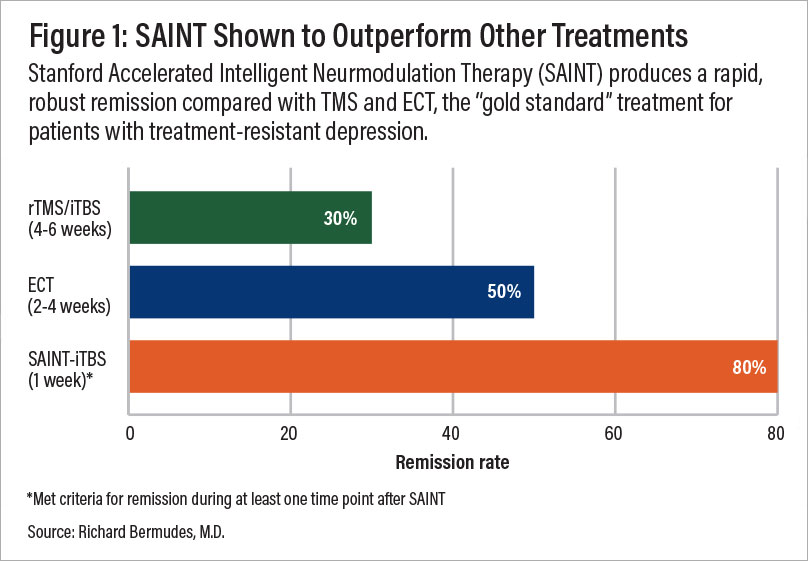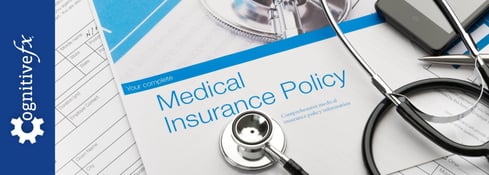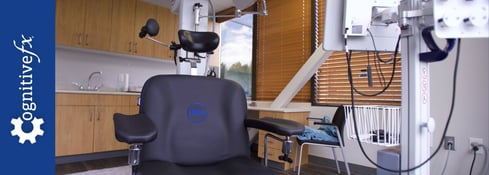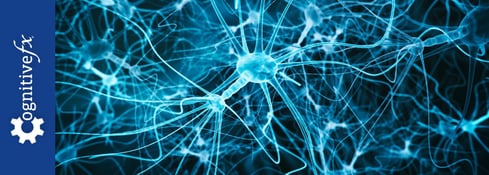The type of protocol used is the most important factor influencing the price of TMS. Conventional TMS protocols are often the most affordable, while advanced protocols typically cost more, but can offer significantly higher response and remission rates.
In addition to the type of TMS, other factors can affect the overall cost of treatment, including:
- Health insurance coverage
- Type of provider and facility
- Geographic location
- Additional therapies or services included
Patients should consider each of these factors when choosing the best treatment option for their needs and budget.
This post will compare the costs of various TMS protocols and other factors that can influence total expenses to help you decide which treatment may be right for you.
We cover:
Note: The focus of this article is on the cost of TMS for treating major depression. The TMS price ranges may vary for other mental health disorders, such as obsessive-compulsive disorder (OCD) or post-traumatic stress disorder (PTSD).
Comparing the Costs and Insurance Coverage of Different TMS Protocols
1. Repetitive TMS (rTMS): $6,000–$15,000
Repetitive transcranial magnetic stimulation (rTMS) is the original and most widely available form of TMS, first used to treat major depressive disorder (MDD) in the 1990s.
- Typical treatment course: 20–36 sessions over 4–6 weeks
- Total cost: Ranges from $6,000–$15,000
- Insurance coverage: Widely covered
- Success rates: ~50% response rate ; ~30% remission rate
Although it may seem expensive, rTMS has been shown to be more cost-effective than long-term use of antidepressant medication, offering improved quality of life at a lower overall expense. This has helped establish rTMS as a viable alternative for patients who don’t respond well to medications.
Insurance Coverage Details
rTMS is currently the only type of TMS that insurance companies consistently cover. Reimbursement for rTMS typically falls in the range of $120–$250 per session among public and private coverage plans, with the rest as out-of-pocket costs for the patient. However, each insurance plan has its own rules and policies (e.g. in terms of deductibles and copays), and understanding these details is key to determining the actual cost you need to cover.
For example, some insurance plans only cover a certain percentage of the total cost of TMS therapy, or they require your healthcare provider to submit a request showing that TMS is an essential treatment for you after several failed antidepressant medications.
2. Accelerated TMS with Intermittent Theta-Burst Stimulation (iTBS): $7,000–$14,000
Accelerated TMS delivers treatment with a different pattern of magnetic pulses in shorter sessions using intermittent theta-burst stimulation (iTBS). iTBS can be delivered once per day for the standard 4–6 weeks, but it's often used on a condensed treatment schedule to shorten the time it takes to complete treatment.
- Typical treatment course: Once daily sessions for 4–6 weeks; or multiple sessions per day for as little as one week
- Total cost: Ranges from $7,000–$14,000
- Insurance coverage: Not widely covered
- Success rates: Comparable to rTMS
Although the equipment is more expensive, shorter treatment times allow clinics to serve more patients, keeping per-patient costs similar to standard rTMS. For patients, the compressed schedule means less time off work and potentially lower transportation costs.
Insurance Coverage Details
While accelerated TMS protocols are not widely covered, coverage for TMS has expanded significantly in recent years, so it’s worth contacting your insurance company to check if they can reimburse you.
3. Stanford Accelerated Intelligent Neuromodulation Therapy (SAINTTM): $30,000–$36,000
Developed at Stanford University, SAINT™ combines iTBS with advanced fMRI imaging and neuronavigation to precisely target the dorsolateral prefrontal cortex (DLPFC)—the area of the brain targeted in TMS for depression. SAINT TMS is currently considered the most effective treatment for treatment-resistant depression (in which patients haven’t responded to multiple rounds of antidepressant medication and psychotherapy).
- Typical treatment course: 5 days
- Total cost: Ranges from $30,000–$36,000
- Insurance coverage: Rare (but growing)
- Success rates: 85.7% response rate; 78.6% remission rate in a double-blind randomized controlled trial

A comparison of remission rates for rTMS/iTBS, electroconvulsive therapy (ECT), and SAINT-iTBS.
What Makes SAINT™ So Effective?
Conventional TMS methods often use manual measurements between external landmarks on a patient's head in order to position the magnetic coil over the treatment target area. Unfortunately, these methods fail to account for variations in head shape, size, and brain structure, which vary from patient to patient. The result is that treatment is delivered less precisely—studies show that missing the DLPFC by a few millimeters is enough to produce poorer results.
SAINT™ solves this issue using fMRI brain scan and neuronavigation technology, which ensure pinpoint accuracy for each and every treatment session, leading to significant improvements in remission and response rates.
Why Is SAINT™ TMS So Expensive?
Clinics offering SAINT need specialized equipment and must pay licensing fees to use proprietary targeting software. As a result, they charge premium rates to offset their substantial investments.
Insurance Coverage Details
SAINT™ depression treatment is not yet covered by most insurance providers. In general, patients must cover the full cost of treatment out of pocket. However, the Centers for Medicare and Medicaid Services (CMS) has announced that hospitals will now be reimbursed $19,703 for the full SAINTTM protocol. New billing codes include daily reimbursement of $3,750.50 for SNT therapy and $950 for targeting, supporting wider availability of this promising treatment for patients with treatment-resistant depression.
4. Accelerated fMRI-guided TMS at Cognitive FX: $9,000–$12,000
Our clinic, based in Provo, Utah, provides an alternative to SAINTTM that offers the same precision of personalized treatment targeting, combined with FDA-approved theta burst stimulation at a significantly lower cost. This approach delivers the same core elements that make SAINTTM so revolutionary.
The only difference between our treatment and SAINT™ (a trademark licensed to Stanford Medical) is our targeting method. Our target locations are determined by fMRI and our prescribing neuroscientist and physician, rather than their proprietary software.
This protocol of TMS is:
-
Safe: Our outpatient, noninvasive treatment is widely tolerated and associated with mild, short-lasting side effects.
-
Precise: fMRI ensures that the treatment target area is precisely located for each patient, accounting for variations in head size and shape. Neuronavigation ensures the magnetic coil is placed with pinpoint accuracy for every treatment session.
-
Fast: Treatment courses are reduced to a single week, making it easier to complete alongside life and work commitments (compared to 4 to 6 weeks of standard TMS and accelerated TMS protocols).
-
Highly Effective: Precision coil placement combined with theta burst stimulation produces the best TMS treatment results to date.
Insurance Coverage Details
Like SAINT™ and most accelerated TMS protocols, our fMRI-guided TMS treatment is not currently covered by insurance. If you need to pay via insurance, we have a sister clinic that offers rTMS treatment. However, you’re also likely to find a clinic offering rTMS closer to where you live as it is the most common protocol used.
Included In Our TMS Treatment Cost: Cognitive Behavioral Therapy
To improve outcomes for our patients, we also include cognitive behavioral therapy (CBT) as a part of our treatment. When combined with the traditional method of TMS (rTMS), CBT improved response and remission rates by ~8% and ~19%, respectively. Additionally, CBT is likely to produce sustained improvement over time once treatment has concluded.
Our brain stimulation treatment is ideal for most patients with treatment-resistant depression. However, we do not treat patients under the age of 18 or over 65. Additionally, as a safety measure, we do not treat patients who have a history of seizures or who are currently actively suicidal and in need of crisis care.
Click here to learn more about receiving accelerated fMRI TMS therapy at Cognitive FX. Or, take our quiz to see if you’re a good fit for treatment.
Other Factors Affecting the Cost of TMS Therapy
Geographic Location
Urban clinics often charge 30–50% more than rural ones due to higher demand and overhead. It pays to compare since prices can vary significantly even within a city.
Type of Facility
Initial Consultations
Most providers require a medical assessment before treatment. This can cost $100–$300. Some clinics apply this fee toward your total cost; others don’t, so be sure to ask.
Additional Services and Therapies
Costs can increase if TMS is combined with:
- Psychiatric evaluations
- Talk therapy
- Follow-up maintenance or booster sessions
- Mindfulness or psychoeducation
- Supplements or light therapy
These can enhance treatment but aren’t typically included in the base price.
Ways to Make TMS More Affordable or Easier to Pay
Payment Plans and Financing Options
To make treatment more accessible, some clinics offer financing or flexible payment plans. These include, for example, paying over 6–24 months or partnering with credit companies offering low-interest loans for medical treatments.
Health Savings Accounts (HSAs) and Flexible Spending Accounts (FSAs)
HSAs and FSAs can be used to pay for TMS treatment, potentially saving 20–30% on treatment costs. TMS is a qualified medical expense for these accounts if prescribed by a physician for a diagnosed mental health condition. Patients should keep records of all TMS-related expenses, including consultation fees, TMS sessions, and travel costs to and from appointments, as these may qualify for reimbursement.
Is TMS Treatment Worth the Cost?
For many patients, the answer is yes—especially when weighing the benefits of TMS against the cost of ongoing medications, therapy, and diminished quality of life.
-
rTMS: ~50% response rate; ~30% remission
-
SAINT™: ~85.7% response rate; ~78.6% remission
-
Cognitive FX’s fMRI-guided TMS: Offers SAINT-level precision at one-third the cost
TMS is generally safe, non-invasive, and well-tolerated, with minimal side effects like mild scalp discomfort. Its effects can last months or years, reducing the need for medication and ongoing psychiatric care. Many patients experience improved mood, sleep, and energy—often for the first time in years.
Click here to learn more about receiving accelerated fMRI TMS therapy at Cognitive FX. Or, take our quiz to see if you’re a good fit for treatment.
Cited Research










